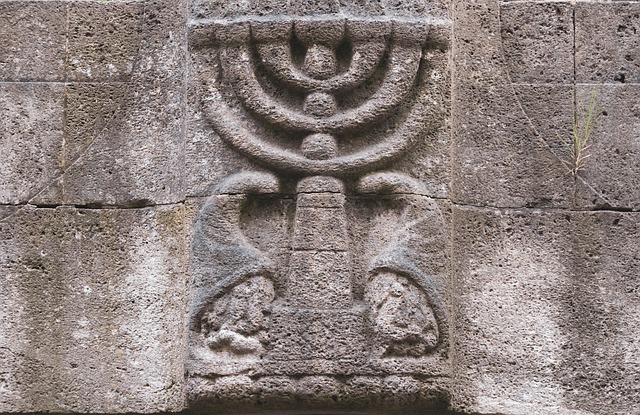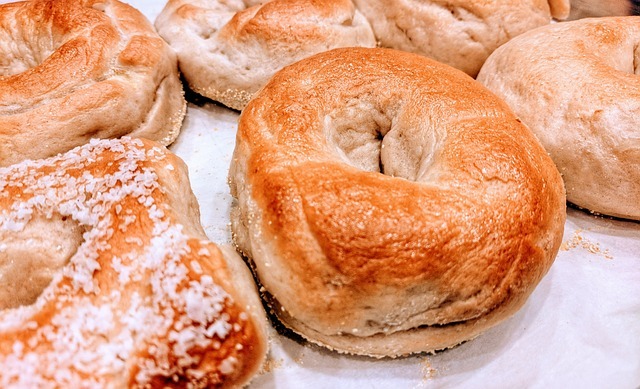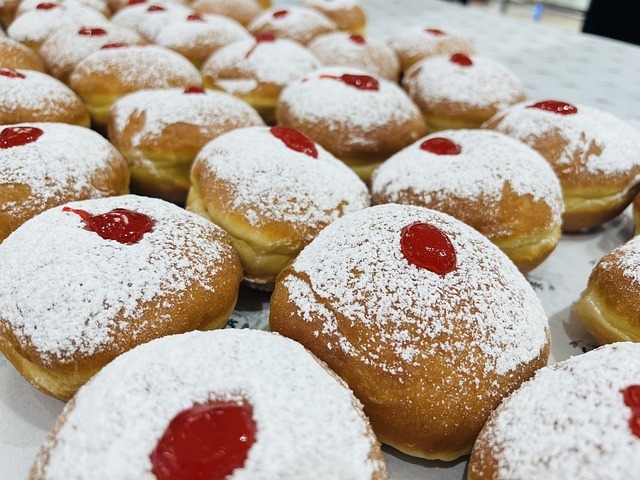admin
By Shahil Ahmed | Submitted On August 30, 2010 
During the past decade, there has been an unexpected surge in interest towards the Jewish culture in medieval Europe. Two international conventions on Jewish heritage in Europe have only helped to fuel the global interest on the subject. At the same time, these meets have provided the much-needed fund to restore and renovate the ancient and medieval period Jewish monuments in the region. And significantly, the Czech capital Prague, with sizable Jewish monuments, has been the hub of such activities that have drawn hordes of tourists from various parts of the globe.
Old Town Square
A visit to the Old Town Square in Prague or Staromestske Namesti, the hub of all activities in the area, is like traveling into the past – back by 600 or 700 years! The visitors are full of admiration and awe as the atmosphere at the place is saturated with glorious as well as the tragic history of the medieval Jews. In addition to the Wenceslas Square, situated at a five minutes’ walking distance, the Old Town Square is the only other city centre in Prague. It is amongst the most beautiful historical locations in entire Europe.
Talking about history, the Old Town Square dates back to the 12th century and was primarily used as Prague’s central marketplace. As many new Romanesque, Baroque and Gothic-style constructions came up around the marketplace over the centuries, the Old Town Square gained in wealth both economically and aesthetically. Today, the most significant tourist attractions at the Old Town Square comprise the Church of Our Lady before Tyn, the Old Town Hall Tower and the Astronomical Clock and the stunning St. Nicholas Church. Right in the heart if the Old Town Square is the statue of the great reformer Jan Hus.
Jewish Town Hall
Originally constructed in the 16th century, the Old Jewish Town Hall is also known as the Zidovska radnice. It is situated adjacent to the Old-New Synagogue in Josefov, but following renovations, today it sports a decorative frontage. The new look was added in the 18th century and has a clock tower with Hebrew figures. The building is known to be funded by the Jewish Town mayor Maisel. Most of parts of the Jewish Town Hall are under the scheduled area and the only part open for the general public is the Kosher Eatery. Currently, the town hall is used as the Jewish Community Center and offers information regarding Jewish tours, activities and events of interest to both the local as well as foreign tourists.
The Old-New Synagogue
The Old-New Synagogue at Josefov in Prague is Europe’s oldest active synagogue and is also known as Altneuschul in German and Staronova synagogue in Czech. Built in the Gothic style in 1270, the Old-New-Synagogue was initially called the New Synagogue or Great Shul. When more synagogues came up in Prague by the 16th century this came to be known as the Old-New Shul or Old-New Synagogue. This is because another synagogue much older to this one and constructed earlier than 1270 was demolished in 1867. The structure of this Gothic style synagogue is outstanding and to reach the foyer one has to climb a flight of nine steps from the street. The foyer opens to a rectangular hall which has six arched bays supported by two large pillars in the middle. The mausoleum has twelve Gothic windows representing the 12 Israeli tribes.
Synagogues of Prague
In all there are seven synagogues in Prague and five of these synagogues can be found in the relics of the Jewish ghetto. Apart from the Old-New Synagogue, there are the Maisel Synagogue, the Pinkas Synagogue, the High Synagogue, the Klausen Synagogue, the Spanish Synagogue and the Jubilee Synagogue. The Maisel Synagogue was built with the permission of Emperor Rudolph II in 1591 and is named after Mordechai Maisel, who funded the construction. On the other hand, the Pinkas Synagogue was built in the Renaissance style. If first finds mention 1492 and was reconstructed in 1953 after floods had destroyed it completely. On the walls of this synagogue there is a list of 77,297 Jews who perished during the World War II. Situated near the Jewish Town Hall, the High Synagogue is named such as it is situated at a great altitude. Near the Old Jewish Cemetery you will find the Klausen Synagogue, which was originally built in 1694 and re-constructed several times. The Spanish Synagogue was built during 1867-8 and is different from the other synagogues in Prague. This synagogue is unique since Moorish decorations were used in its construction. The most modern in this series of synagogues in Prague is the Jubilee Synagogue. This was built in the early 20th century in the New Town and prayer services are held regularly at this synagogue.
Old Jewish Cemetery
Established in the 15th century, the Old Jewish Cemetery is situated in the Josefov area – a primeval Jewish ghetto – and has 12,000 tombstones scattered all over the area. The cemetery was established at a time when the Jews were not permitted to bury their dead outside the area earmarked for the community. As the cemetery area was too congested, bodies were buried here on top of one another. And it is believed that most of the tombstones have twelve layers of burials below them! Currently, no more bodies are buried here and the Jewish Museum in Prague has taken over the responsibility to preserve this chaotic place. Incidentally, the Old Jewish Cemetery was a favorite place for the surrealist writer Franz Kafka who spent much of his idle time here.
Jewish Museum
Founded in 1906, the Jewish Museum in Prague is the arguably the largest of its kind in Europe and has an enormous assortment of sacred Jewish works of art. According to modest estimates, the museum houses around 40,000 artistic artifacts and 100,000 items of printed fabric. Synagogue objects like textiles and silver include almost two-thirds of the museum’s huge collection. The exhibits of the Jewish Museum are to be found in six different locations of historic importance. They include the Maisel Synagogue, the Old Jewish Cemetery, the Pinkas Synagogue, the Ceremonial Hall, the Spanish Synagogue and the Klausen Synagogue. The museum not only comprises synagogues and exhibitions on the Jew community’s past, but also promotes contemporary Jewish art and culture. The Robert Guttmann Gallery situated near the Spanish Synagogue is an ideal example of such promotional activities.
The Jewish Quarter
The Jewish Quarter or Josefov in Prague is akin to a ghetto where the members of the Jewish community were compelled to live in the early days. The Jewish settlement in the area dates back to the 10th century. Prior to and during the World War II, all the Jews residing in the area was required to wear clothes with special markings on them to identify their community. The place has an old cemetery, numerous old buildings and many old synagogues. However, prayer services are not held in most of these synagogues, as the Jewish population in Prague has diminished from 120,000 before the World War II to just 8,000 now. And many of these 8,000 Jews also no longer reside in the region today. The place is, however, being re-built now and has already got rid of its clumsy look.
Franz Kafka House
If you are in Prague, you cannot miss Franz Kafka. Whether you are in a library, bookstore or any other place, the shadow of the great surrealist writer of the 20th century will always loom large. While Kafka’s house, where he stayed with his sister for a few months, is located at the beginning of the Golden Lane, his statue stands near the synagogues in the Jewish colony. Presently, Kafka’s house is being used as a museum where outfits, armaments and works of art of the middle ages are on display. For the uninhabited, the writings of Franz Kafka, who was born in Czechoslovakia, but spoke German, mostly became popular after his death. He primarily wrote about the loneliness of the 20th century man, the bureaucratic maze and his fears. Among Kafka’s most famous novel is ‘The castle and The Trial’ that best demonstrates Kafkaesque characters and the features of his unique writing style. He succumbed to tuberculosis in 1924.
The Hebrew Clock
Another attraction of the Old Town Square in Prague is the Hebrew Clock of the Old Jewish Town Hall in Josefov. The clock, established in 1410, is interesting in many ways. While the clock has Hebrew numbers and runs in an anti-clock manner, it does not depict time. On the contrary, the clock depicts the days of the Christian calendar, phases of the moon, seasons and equinoxes. On the upper windows, there is a 30-second demonstration of apostles, deadly skeletons and a crowing cock every hour that mesmerizes and often scares the tourists. On a pane above this Hebrew Clock there is another clock with Roman numbers.
Jewish Ceremonial Hall
Located in Jewish Quarter, the Jewish Ceremonial Hall is also known as Obradni Sin. It was built in neo-renaissance style in 1911-12. Noted architect J. Gerstl planned the structure that was to be used for the Jewish Burial Society. The construction was initially utilized as a ceremonial hall and mortuary, but now it forms a part of the Jewish Museum of Prague. Currently, the Jewish Ceremonial Hall houses a permanent exhibition relating to Jewish history.
Author is an expert writer who about various niche of life.
Article Source: https://EzineArticles.com/expert/Shahil_Ahmed/515686
The #1 way to stay connected to Talking Point
Amet minim mollit non deserunt ullamco est sit aliqua dolor do amet sint. Velit officia consequat duis enim velit mollit. Exercitation veniam consequat sunt nostrud amet.
Amet minim mollit non deserunt ullamco est sit aliqua dolor do amet sint. Velit officia consequat duis enim velit mollit. Exercitation veniam consequat sunt nostrud amet.
Join our community today!
Amet minim mollit non deserunt ullamco est sit aliqua dolor do amet sint. Velit officia consequat duis enim velit mollit. Exercitation veniam consequat sunt nostrud amet.
Recent Episodes

About the show
Amet minim mollit non deserunt ullamco est sit aliqua dolor do amet sint. Velit officia consequat duis enim velit mollit. ExercitationAmet minim mollit non deserunt ullamco est sit aliqua dolor do amet sint. Amet minim mollit non deserunt ullamco est sit aliqua dolor do amet sint. Velit officia consequat duis enim velit mollit. Exercitation veniam consequat sunt nostrud amet.Velit officia consequat duis enim velit mollit. Exercitation veniam consequat sunt nostrud amet. veniam conAmet minim mollit non deserunt ullamco est sit aliqua dolor do amet sint. Velit officia consequat duis enim velit mollit.
Meet the Hosts


Stay Connected, join our newsletter
New episodes
We publish INTERVAL on DAY at TIME.
Be our guest?
Show Name
Listen Now!
Amet minim mollit non deserunt ullamco est sit aliqua dolor do amet sint. Velit officia consequat duis enim velit mollit. Exercitation veniam consequat sunt nostrud amet.
New episodes
We publish INTERVAL on DAY at TIME.
Be our guest?
New episodes
We publish INTERVAL on DAY at TIME.
Be our guest?
Top Twelve Famous Jewish Dishes by Ethnicity
By Shalom Goldfarb | Submitted On July 06, 2010
When speaking about Jewish food and eating habits, it’s hard to isolate a single strain. That’s because Jews have been spread out among so many different countries and cultures ever since their exile in the year 70CE that you’d have to talk about each Jewish ethnic sect separately to make any sense of Jewish eating habits and Jewish food. Each Jewish ethnicity took recipes and dishes from its host country, whether it be Africa, Europe, Yemen, or the Orient. So what we’ll do is a top three Ashkenazi (European) foods, top three African foods, and top three Yemenite foods, and top three Oriental Jewish foods.
The most stereotypical Jewish food is that popularized by the Ashkenazi ethnic sect, coming out of Europe and especially Germany and Eastern Europe. Jewish eating habits from there are influenced by constant poverty that struck the Pale and forced the Jews to eat cheaply. The dishes that became a mark of the poor man back then are now cultural phenomena, mostly because Ashkenazi Jews are the most heavily Westernized of Jews, and the most in contact with American culture. Therefore, when an American thinks “Jew” he thinks Ashkenazi Jew.
1) Cholent. This is a Yiddish word that I just found out from Google Translate means “spares.” I thought it meant stew, but it doesn’t. This makes a lot of sense, because spares are essentially what cholent is. The actual food is pretty much any scrap you can put in a slow-cooker, vegetable, meat, grain (usually barley because it’s cheap), and water, chuck it in there and simmer it on low for 24 hours. It’s incredibly easy to make, requires no effort, and is a good dish if you have a bunch of refrigerator scrap left over you don’t want to throw out. You also go to your butcher and take his scrap (bones, fat, some meat chunks cut off that nobody wanted because they’re not very good), and your cholent comes out really cheap. Since it’s cooked for so long, though, everything turns out delicious in the end. For authentic Ashkenazi cholent, you’ll need some intestine stuffed with pureed vegetables. This can get dangerous if you don’t clean it properly.
2) Gefilte Fish. Once again the cheap stuff. Carp is such a bony fish that it’s nearly impossible to eat. This is why it’s so cheap, and this is also why gefilte fish is made out of carp. In order to get rid of the bone problem, Jews of Ashkenaz just put the entire thing in a grinder and made fish puree, re-stuffed the skin, and called it a day.
3) Gribinis. Cheap again? Of course. Go to your butcher and ask him to give you the leftover skin for free. He’ll probably do it. Then you put a bunch of oil in a pan and fry the stuff up with some onions. Very, very bad for you, but very, very good.
We can see now how cheap Ashkenazi Jews are, especially now that they’ve made everyone culturally aware of these foods and now everyone thinks they’re delicacies or something. I’m an Ashkenazi Jew, so it makes me laugh. Let’s move on to the Sephardim.
1) Hamin. This is a straight up Hebrew word meaning, “Hot stuff.” Doesn’t necessarily mean spicy, but it’s basically cholent with different ingredients. Instead of garbage, the Sephardim use rice in place of barley, and hard boiled eggs instead of meat scraps. Sephardim also actually use spices, which Ashkenazi dishes don’t usually have much of besides salt and pepper.
2) Shakshouka. I’ve had this made really horribly (Israeli Army) and really amazingly (my wife). Basically tomato sauce, paprika, baharat (google it), cilantro, parsley, onions, and eggs fried over easy in the juices. If made right, it’s really great stuff. If made badly, it tastes like tomato-flavored rubber tires from your local mechanic.
3) Sahlav. This is a rose-water based thick pudding-like drink that tastes like a combination of perfume and Pier1Imports smell. I personally think it’s gross.
Am I biased towards Ashkenazim? Probably. On to Africa.
1) Injera. I had this at an Ethiopian absorption center in northern Israel. It’s a savory pancake, and it’s pretty good. I hear it’s made from tif flour, a grain found in Africa.
2) Waat. A spicy sauce made of meat, vegetables, and beans. It’s what you put in injera.
3) Taj. Home brewed honey wine with lemon juice.
On to Yemen? Let’s do it.
1) Lamb’s head. This is exactly what it sounds like. Yemenites eat it on Rosh Hashana instead of a fish head. They basically roast the whole thing and eat it off the skull. I intend on getting one this year to try it out.
2) Jahnun. Yemenite Jewish pastry, fillo dough wrapped in a spiral and coated with vegetable oil and fried. It’ll make you sick, that I guarantee.
3) Arak. There’s an argument over whether this is primarily Sephardic or Yemenite. But either way, it’s an anise flavored highly alcoholic beverage, my favorite drink, though I mix it with coke.
Shalom Goldfarb is the editor of Judaica Worldwide, a portal of educational material on Judaism, Judaica, and Jewish holidays. There’s also some Jewish humor on the blogroll, so check it out!
Article Source: https://EzineArticles.com/expert/Shalom_Goldfarb/647026
The Tradition Behind Traditional Jewish Food
By Amber Jonas | Submitted On August 22, 2006
Over the years, traditional Jewish foods have found their way into contemporary American eating habits. Perhaps you’ve run to a deli or a grocery and ordered a quick lunch of corned beef on rye with a kosher dill on the side, or maybe you stopped for a quick bite of a bagel rushing to work in the morning, or maybe a sweet blintz is more to your liking. Even a run through most store bakeries show you stacks of challah bread.
Most Americans don’t give what they eat a second thought, and dismiss traditional Jewish food as just another form of fast food. Eaten on the run, there is little thought behind the food and it’s traditional place in Jewish culture and cuisine. This only clarifies how well assimilated food traditions are in America.
Perhaps the quintessential traditional Jewish food is the bagel. The traditional aspect of the bagel is found in dubious historical fact. The bagel is said to have originated in Vienna. Created by a Jewish baker to honor the Polish King, Jan Sobieski III, for heading the Polish cavalry in a charge that saved Vienna from invasion by the Turks in 1683, the shape of the bagel is supposed to mimic the stirrup (called a beugal) of King Jan’s saddle. The facts are, there was a Polish King Jan III, he did lead a cavalry charge to defend Vienna from invading Turks, and there were Jewish bakers in Vienna at the time. However, there is reference to a food named “beygls” as early as 1610, found in paperwork from Krakow, Poland. In addition, “bugel” was a Yiddish word which was used to describe a round loaf of bread. That aside, the bagel has been eaten by most eastern European Jews since the 1600’s. It came to America with the Ashkenazi in the late 1800’s, and is considered by that community to be traditional Jewish food.
Though not sold in all delis across America, the moniker “Jewish Penicillin” is given to down home chicken soup. It is hard to consider such a universally eaten soup as Jewish, yet, many Jewish families made it through many centuries of hard times all over the globe on chicken soup. The traditional Jewish food is a clear, or pale yellow broth, eaten with bits of chicken floating in it, most often with broad egg noodles. At one point in time, in most middle class American Jewish homes, chicken soup was a once a week staple. Most people will agree that they eat chicken soup when they have a cold, and there is actual laboratory evidence that homemade chicken soup can actually make the length of a cold shorter by days.
If people took the time to stop and think about their food choices, they would agree they eat some type of food on a weekly basis that they would consider traditional Jewish food. They might not know the history behind the tradition, but they would see the food as a Jewish staple.
Thanks for reading. If you found this article helpful be sure to check out more kosher information [http://www.jewishhomecooking.com/jewisharticles.html], tips, and more articles about Jewish cooking on my website: [http://www.jewishhomecooking.com].
Article Source: https://EzineArticles.com/expert/Amber_Jonas/45705








